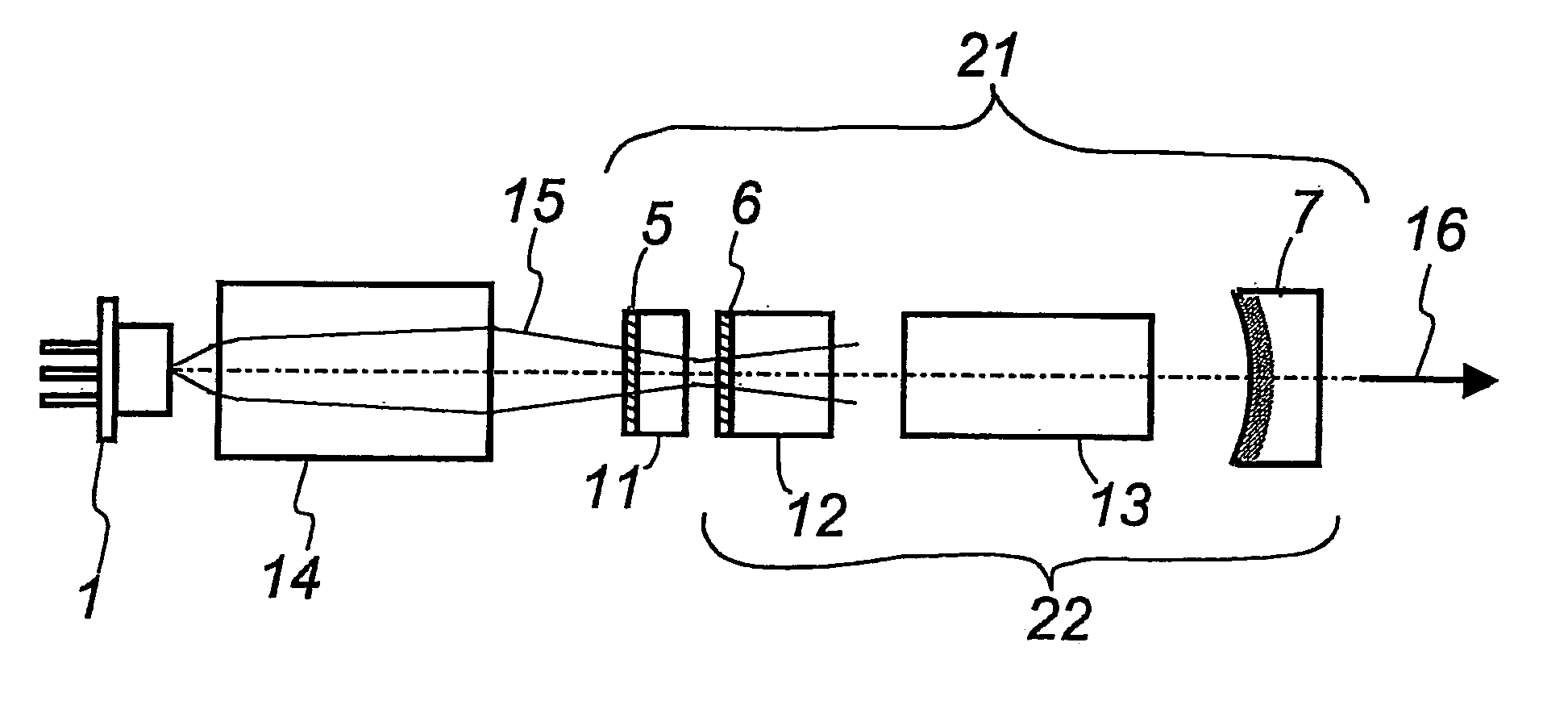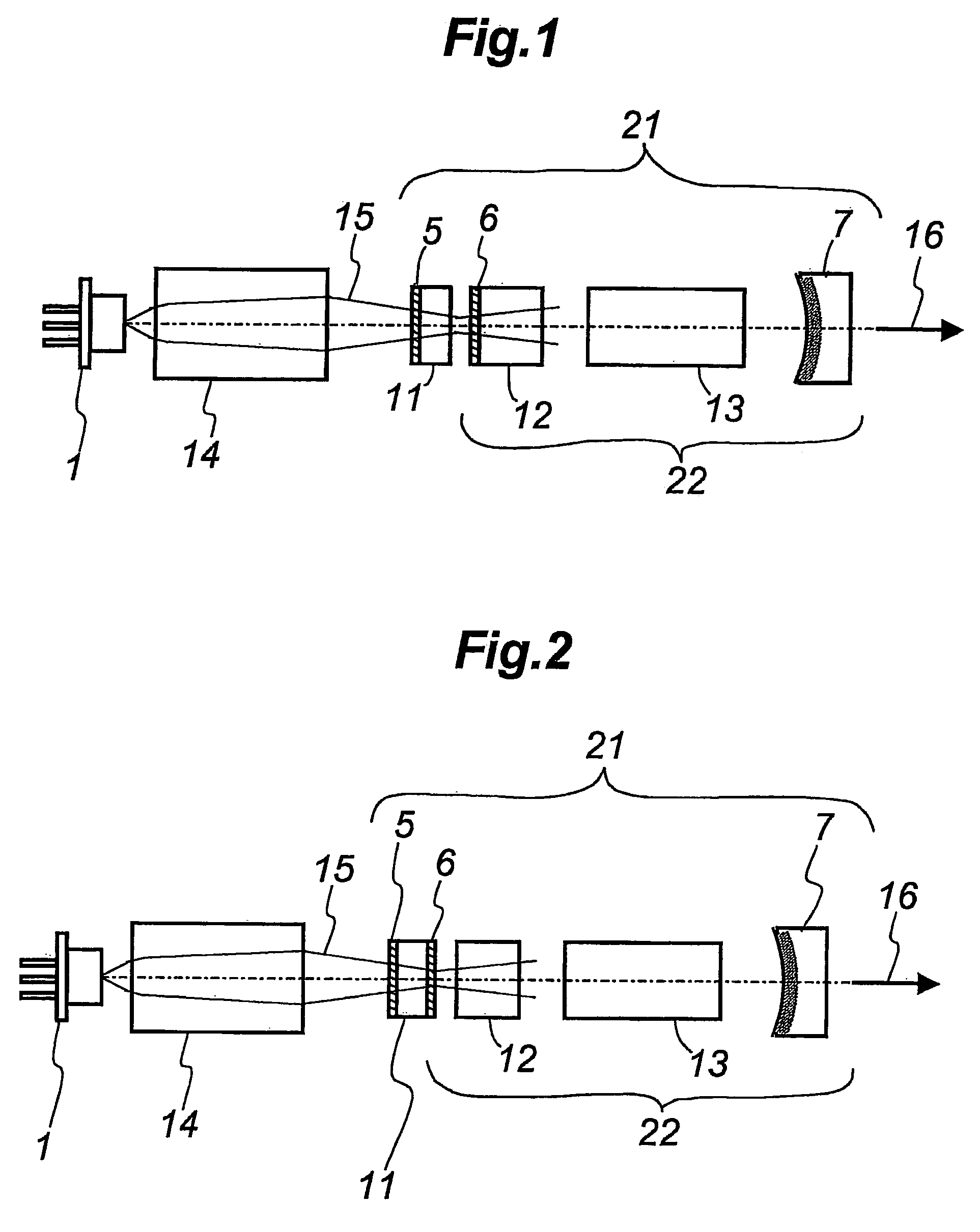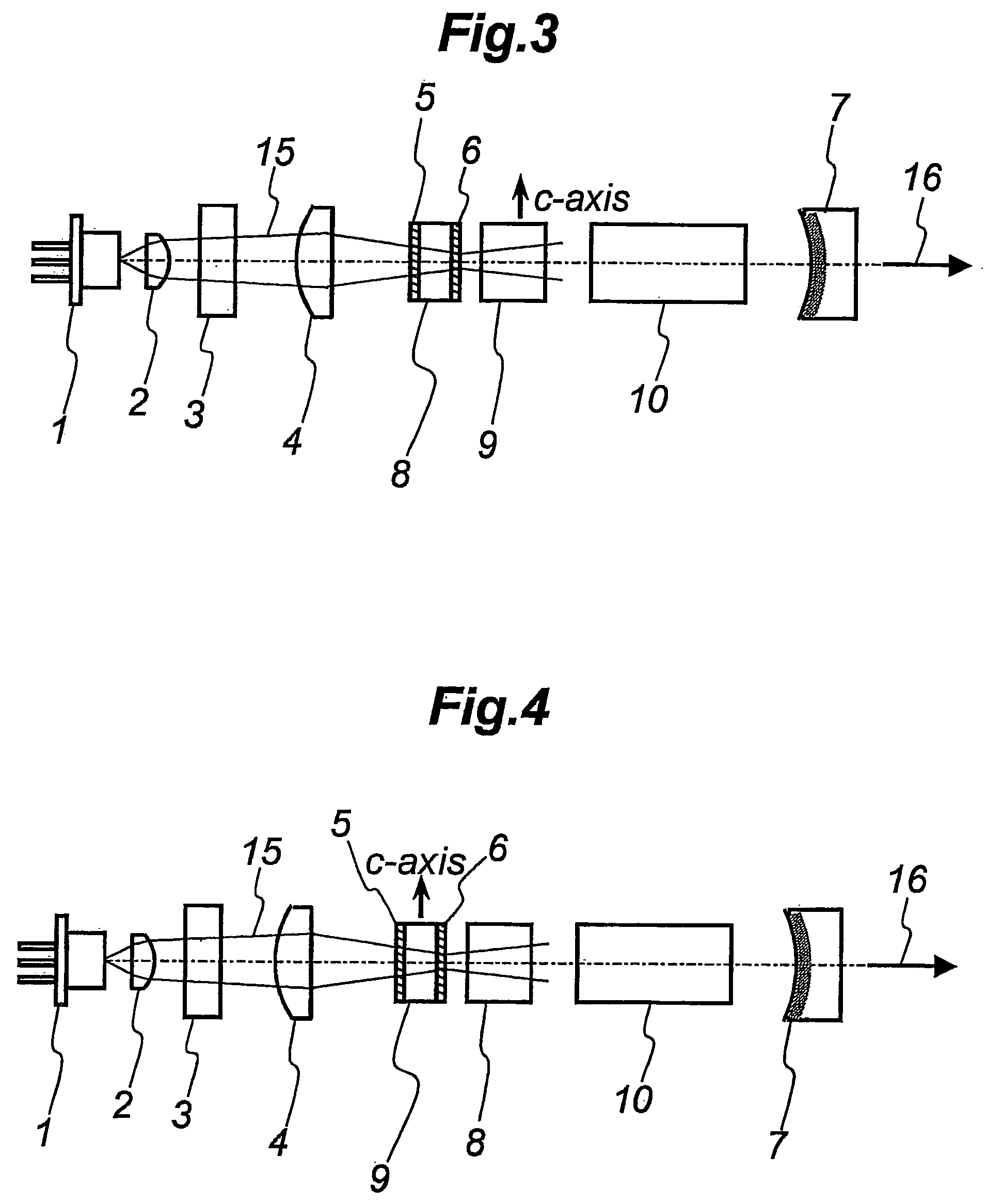Intracavity sum-frequency mixing laser
- Summary
- Abstract
- Description
- Claims
- Application Information
AI Technical Summary
Benefits of technology
Problems solved by technology
Method used
Image
Examples
Embodiment Construction
[0026] An intracavity sum-frequency mixing laser embodying the present invention is described in the following with reference to FIG. 1.
[0027] The illustrated laser include a laser optical assembly essentially consisting of a first reflective surface 5, a first laser crystal 11, a second reflective surface 6, a second laser crystal 12, a nonlinear optical crystal 13 and a third reflective surface 7, arranged in that order along a common optical axial line which is straight in the illustrated embodiment.
[0028] The first reflective surface 5 may consist of a multi-layer dielectric film applied to a face of the first laser crystal 11 or may also consist of such a film applied to a separate glass or crystal plate. In the latter case, the glass or crystal plate may not necessary be attached to or placed close to the first laser crystal 11, but may be spaced from the first laser crystal 11.
[0029] The second reflective surface 6 may consist of a multi-layer dielectric film applied to a ...
PUM
 Login to View More
Login to View More Abstract
Description
Claims
Application Information
 Login to View More
Login to View More - R&D
- Intellectual Property
- Life Sciences
- Materials
- Tech Scout
- Unparalleled Data Quality
- Higher Quality Content
- 60% Fewer Hallucinations
Browse by: Latest US Patents, China's latest patents, Technical Efficacy Thesaurus, Application Domain, Technology Topic, Popular Technical Reports.
© 2025 PatSnap. All rights reserved.Legal|Privacy policy|Modern Slavery Act Transparency Statement|Sitemap|About US| Contact US: help@patsnap.com



